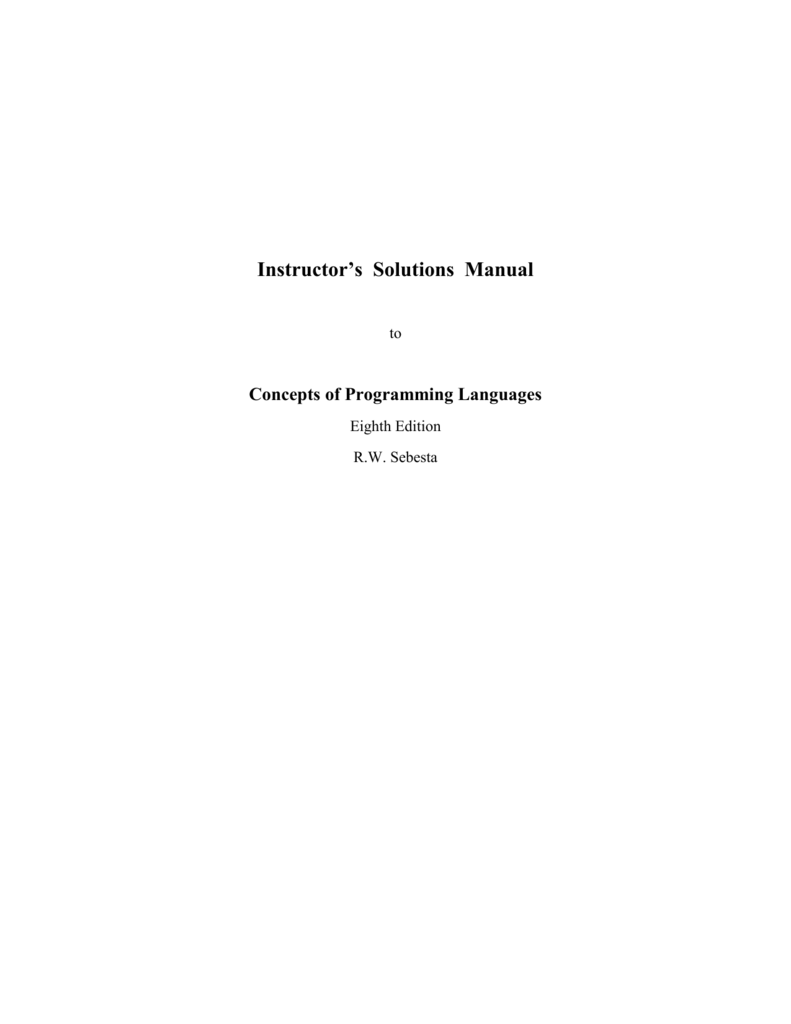Concepts Of Programming Languages Solutions Manual

8: Distinguish between static and dynamic semantics. Static semantics is more on the legal forms of programs (syntax rather semantics) and is only indirectly related to the meaning of the programs during execution.
Static semantics is so named because the analysis required checking these specifications can be done at compile time. Dynamic semantics is describing the meaning of the programs. Programmers need to know precisely what statements of a language do. Compile writers determine the semantics of a language for which they are writing compilers from English descriptions.
9:What purpose do predicates serve in an attribute grammar? The use of predicates functions is to state the static semantic rules of the language. What is the difference between a synthesized and an inherited attribute? The synthesized attributes are the result of the attribute evaluation rules, and may also use the values of the inherited attributes. The inherited attributes are passed down from parent nodes.
In some approaches, synthesized attributes are used to pass semantic information up the parse tree, while inherited attributes help pass semantic information down it. For instance, when constructing a language translation tool, such as a compiler, it may be used to assign semantic values to syntax constructions. Also, it is possible to validate semantic checks associated with a grammar, representing the rules of a language not explicitly imparted by the syntax. What is the primary use of attribute grammars? An attribute grammar is a device used to describe more of the structure of a programming language than can be described with a context-free grammar. An attribute grammar is an extension to a context-free grammar. The extension allows certain language rules to be conveniently described, such as type compatibility.